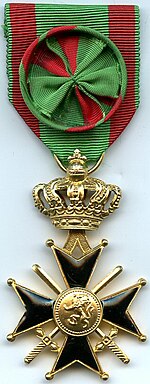The Order of Leopold II is an order of Belgium and is named in honor of King Leopold II. The decoration was established on 24 August 1900 by Leopold II as Sovereign of the Congo Free State and was in 1908, upon Congo being handed over to Belgium, incorporated into the Belgian awards system. The order is awarded for meritorious service to the sovereign of Belgium, and as a token of his personal goodwill. It can be awarded to both Belgians and foreigners, and is seen as diplomatic gift of merit.
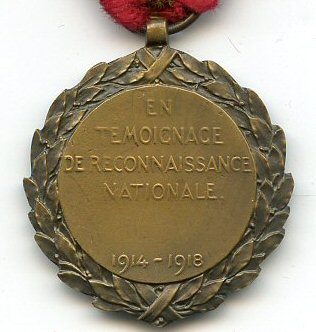
The King Albert Medal was a Belgian medal established by royal decree on 7 April 1919 and awarded to both Belgians and foreigners who were exceptionally meritorious in promoting, organising or administering humanitarian and charitable work that assisted Belgians in need during the First World War.
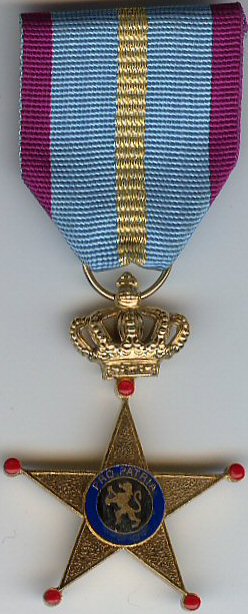
The Cross of Honour for Military Service Abroad is a Belgian military decoration originally established for award to Belgian servicemen who served for a long period of time in the Federal Republic of Germany, Zaire, Rwanda or Burundi. It was established on 16 June 1997 in three classes.

The 1914 – 1918 Fire Cross was a Belgian military decoration awarded to all holders of the so-called "Fire Card" which was awarded to all who came under fire at the front during the First World War. The medal was established by royal decree on 6 February 1934. It could not be awarded posthumously.

The Meritorious service medal for personnel of the Belgian Defence Forces and Foreign Armed Forces is a military decoration of Belgium. It was established on 23 February 2005 as a more rewarding successor of an earlier Medal of Military Merit and is awarded to members of the Belgian Armed Forces and civilians working for the Belgian Defence who show an exemplary meritorious behaviour in the completion of their duties or who have accomplished an exemplary meritorious act.
The Civic Decoration is a civilian decoration of the Kingdom of Belgium. It was first established by royal decree on 21 July 1867 to reward exceptional acts of bravery, devotion or humanity. A further royal decree of 15 January 1885 extended the award to state civil servants for long service by a mere change of ribbon. The award statute was once again amended by royal decree in 1902 to include long service in the Civic Guard and firefighters, each with its distinctive ribbon.

The Military Decoration is a military award of the Kingdom of Belgium. It was established on December 23, 1873 and is awarded to non-commissioned officers and other ranks of the Belgian Armed Forces for long service. Initially, the medal was created in 2 versions. The version for exceptional service, gallantry or devotion to duty was created by the same royal decree, has the same jewel, but a different ribbon. Currently, both medals still exist, but are considered to be separate awards, not variations of the same award.
The Croix de guerre (French) or Oorlogskruis (Dutch) is a military decoration of the Kingdom of Belgium established by royal decree on 25 October 1915. It was primarily awarded for bravery or other military virtue on the battlefield. The award was reestablished on 20 July 1940 by the Belgian government in exile for recognition of bravery and military virtue during World War II. The post-1940 decoration could also be awarded to units that were cited. The decoration was again reestablished by royal decree on 3 April 1954 for award during future conflicts.

The Yser Medal was a Belgian campaign medal of World War I, established on 18 October 1918 to denote distinguished service during the 1914 Battle of the Yser in which the Belgian Army stopped the German advance of the German invasion of Belgium.

The 1940–1945 Military Combatant's Medal was a Belgian war medal established by royal decree on 19 December 1967 and awarded to all members of the Belgian Armed Forces who fought from the United Kingdom during the Second World War.
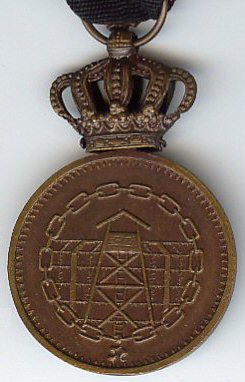
The Prisoner of War Medal 1940–1945 was a Belgian war service medal established by royal decree on 20 October 1947 and awarded to all members of the Belgian Armed Forces imprisoned by Axis Forces during the Second World War.
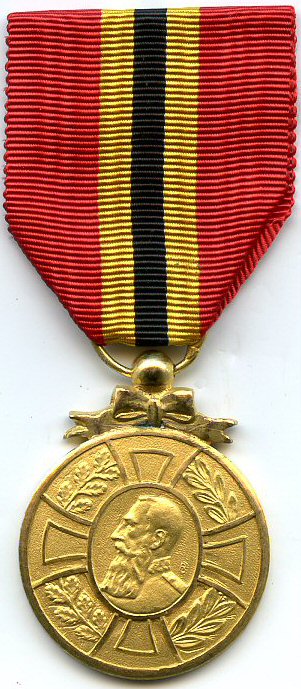
The Commemorative Medal of the Reign of King Leopold II was a Belgian civilian and later military and police forces medal originally established on 21 July 1905 by royal decree to commemorate the 40th year of the reign of King Leopold II.

The Maritime Medal 1940–1945 was a Belgian bravery award of World War II, established by Royal Decree on 17 July 1941 and awarded to members of the Belgian Navy, merchant navy or fishing fleet for acts of heroism in the saving of ships or lives during an action against the enemy.

The Political Prisoner's Cross 1940–1945 was a Belgian war medal established by royal decree of the Regent on 13 November 1947 and awarded to Belgian citizens arrested and interned by the Germans as political prisoners during the Second World War. The award's statute included provisions for posthumous award should the intended recipient not survive detention, and the right of the widow, the mother or the father of the deceased to wear the cross.

The Medal for Services Rendered is a Belgian military service medal that was proposed to be created on 18 April 1988 by ministerial decree. It was intended to be awarded to members of the army, navy, air force and medical services of the Belgian Armed Forces for service rendered in particularly difficult circumstances over an extended time period. However, the creation of the medal was presented to the Council of State under the form of a ministerial decree and the Council ruled that the creation of such an award should be done by the King, thus via a Royal Decree. As a Royal Decree was never adopted, the medal was never officially created and has not or cannot be awarded.
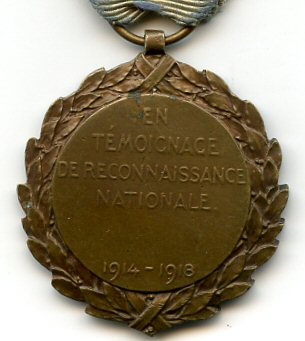
The Political Prisoner's Medal 1914–1918 was a Belgian medal established by royal decree on 26 December 1930 and awarded to Belgian civilians who were detained for a minimum of one month by the Germans during the First World War following an act of courage or devotion towards the Allies' cause.

In 1833, following the end of the Belgian Revolution, the young kingdom of Belgium created the Iron Cross to recognise wounds received and bravery in battle. The award first class was bestowed to the wounded who elected to stay at their post and keep fighting, to the maimed and mutilated, as well as for acts of courage, the award second class was bestowed to all wounded combatants. In 1835, due to the discontent of most recipients, the award 2nd class was terminated and all received the first class. Over the years, recipients of the Iron Cross received ever increasing pensions, up to ten years of seniority when employed as civil servants and pensions for the widows and orphans of the deceased. The other combatants of 1830-1831 received no pension, and no commemorative medal was struck.

The Iron Cross was established by law in 1833 following the end of the Belgian Revolution to recognise serious wounds received and bravery in battle by Belgian citizens taking part in the fight for Belgian independence from the United Kingdom of the Netherlands between 25 August 1830 and 4 February 1831. A further royal decree of 22 August 1834 created a second class to the Iron Cross for award to all wounded combatants. Due to the lower perceived importance of the second class award and discontent among recipients, the Iron Cross second class was short-lived and amalgamated to the Iron Cross first class by decree of 21 February 1835. All recipients now received the (original) first class award.

The Commemorative Decoration of the 50th Anniversary of the Creation of the Railroads 1834-1884 was a Belgian commemorative award denoting the 50th anniversary of the law of 1 May 1834 ordering the creation of railroads in Belgium. It was established by royal decree of King Leopold II on 30 April 1884 at the suggestion of the ministers of Public Works and of the Interior, its statute was ratified by a further royal decree on 11 July 1884.
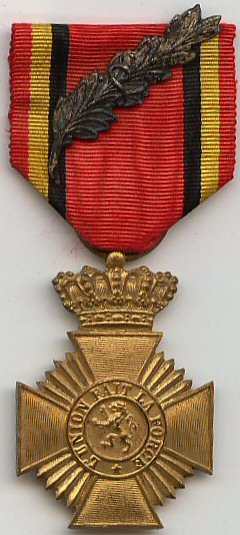
The Military Decoration for Exceptional Service or Acts of Courage or Devotion is awarded to personnel of the Belgian Armed Forces for either displayed herorism or for display of extraordinary devotion to duty. In history, sometimes it is referred to as an 'Article 4' award, as originally, the medal was created as a variation of the military decoration for long service. However, nowadays, both medals are distinct awards, albeit still having the same guilt cross.
